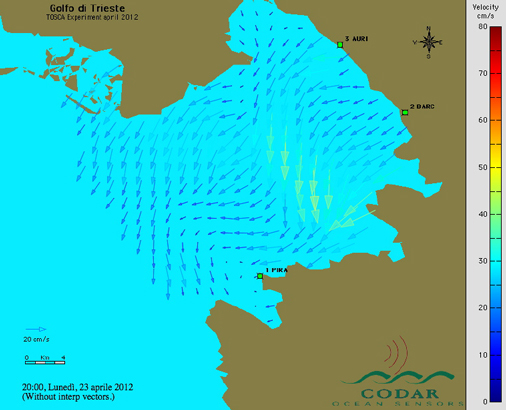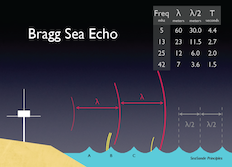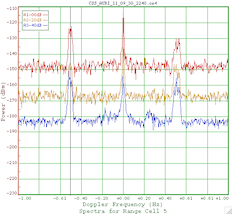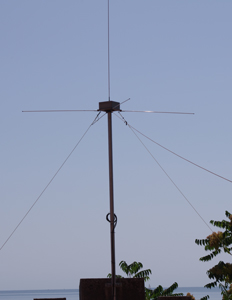Prediction of transport of substances released in the ocean is very challenging because it is highly sensitive to the correct knowledge of the velocity field. Even small errors in the velocity field can cause significant errors
HF (high frequency) radars are very powerful instruments able to provide maps of surface velocity in extensive regions of the sea (range of the order of 30-50 km) and at time intervals of half an hour. They are therefore very well suited for continuous monitoring of surface ocean currents to be used for environmental reasons.
During TOSCA, the CNR-ISMAR Seasonde antennas are used in collaboration with OGS to monitor the area of the Gulf of Trieste
The radar velocities can be used to compute dispersion using appropriate advection models.

Example of velocity field from HF radar in the Gulf of Trieste during the Tosca experiment

The rough sea surface can act like a large diffraction grating. Only when the radar signal scatters off a wave that is exactly half the transmitted signal wavelength, AND that wave is traveling in a radial path either directly away from or towards the radar, the radar signal will return directly to its source. The scattered radar electromagnetic waves add coherently resulting in a strong return of energy at a very precise wavelength

Example of scattered signal strenght VS frequency

Picture of the TX/RX antenna in Aurisina (Trieste)
